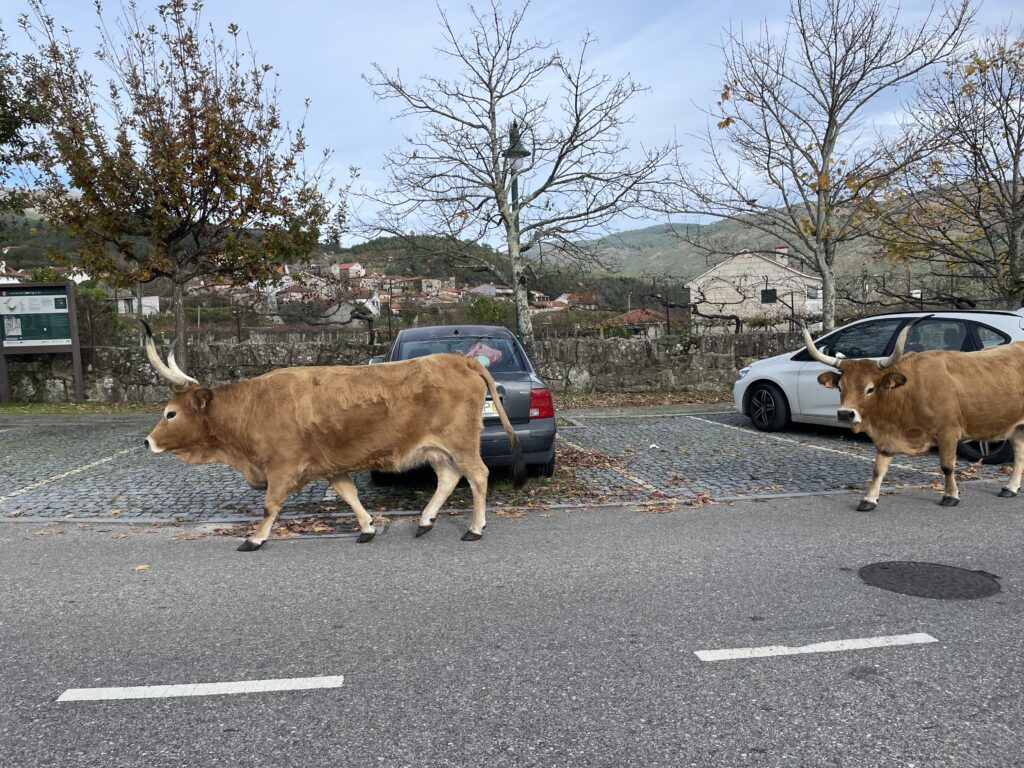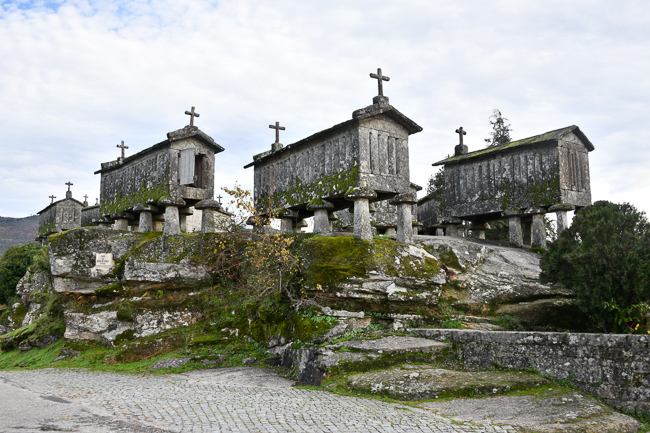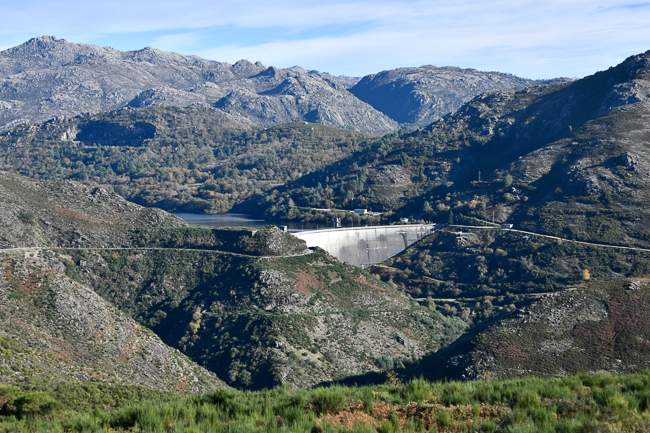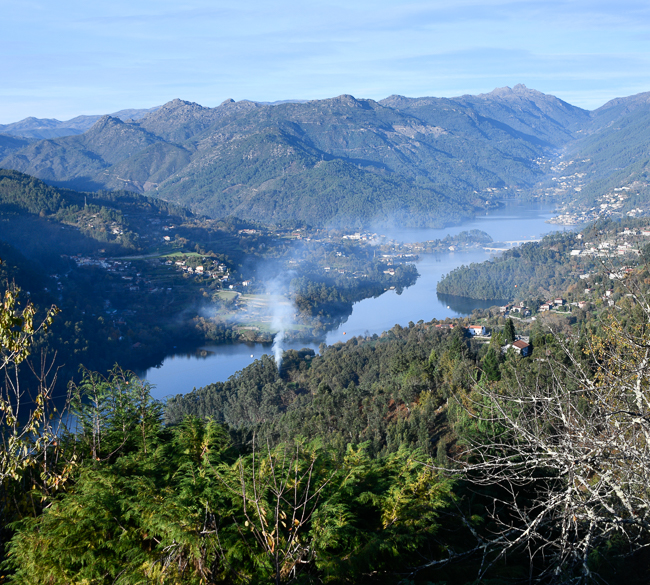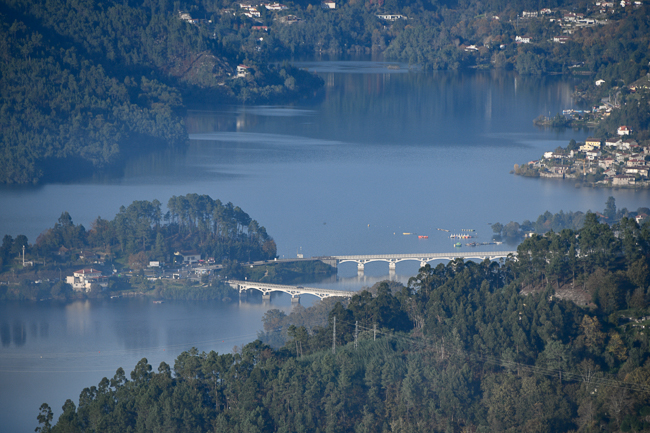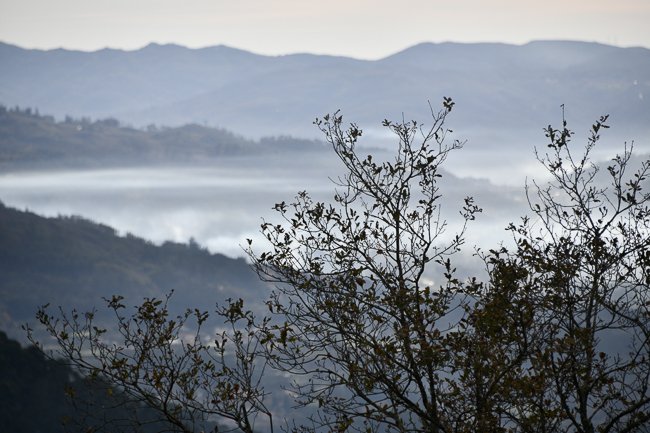November 2022
Peneda-Gerês National Park
Soajo
My traveling partner Susan and I picked up a dear friend Katherine who is accompanying us for the next few days. Our first stop after a lovely night in Fortaleza de Valença was the town of Soajo. While there are signs everywhere warning you of wandering cows, it is still rather hysterical to encounter them in a parking lot.
I fell in love with these buildings in Spain, where they are called Herreros. In Portugal they are Espigueiros. Essentially they are above-ground food storage to keep rodents out. These in the town of Soajo are especially interesting. The main reason for me is that they are out of stone, most I have seen have a stone floor but the building itself is wood.
Espigueiros means spikes and these granaries are supported on granite slabs from the Peneda mountains where they reside. The oldest dates to 1782 and the cluster was built between the 18th and 19th centuries. They were intended for use by the entire community and today, some are still used for storing, primarily corn.
Driving in the hills of the park
The Peneda-Geres National Park was created in 1971 and is the oldest protected area and the only national park in Portugal.
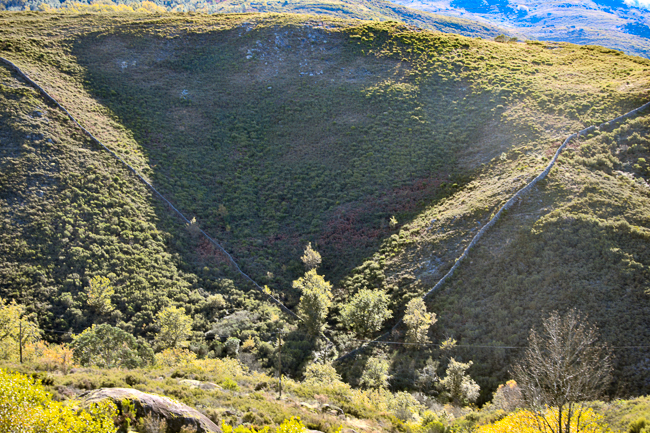 Peneda-Gerês was given its name by its two main granite massifs, the Serra da Peneda and the Serra do Gerês which, with the Serra Amarela and the Serra do Soajo, constitute the park’s highest peaks.
Peneda-Gerês was given its name by its two main granite massifs, the Serra da Peneda and the Serra do Gerês which, with the Serra Amarela and the Serra do Soajo, constitute the park’s highest peaks.
Driving on a one-car width, frightening, winding road in the park I spotted this massive wall. It is a fojos.
A fojos is a wolf trap made of stone. Tons and tons of stone had to be transported via ox cart and it took an entire village to build a fojo. Their purpose? To kill the wolves that attacked the herds.
This wolf trap with converging walls lies on the left bank of the Germil River. This type of trap only exists in the Iberian Peninsula and consists of 2 high walls forming a V and converging into a pit, where the wolf was cornered by the scouts. At the top of the wall, wide slabs prevented the animal from escaping.
Driving the frightening road one ends the hair-raising portion at the Caniçada Dam. The dam sits on the Cavado river, and after the dam, the river widens significantly creating a lovely recreational area in the valley.
